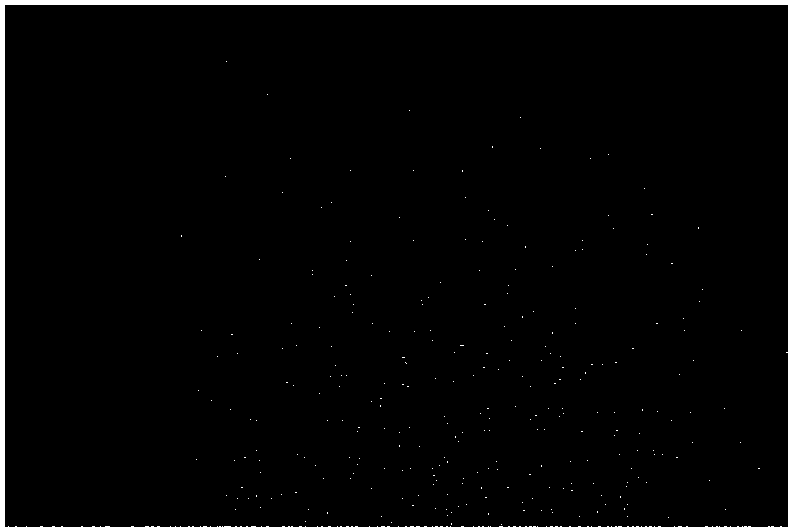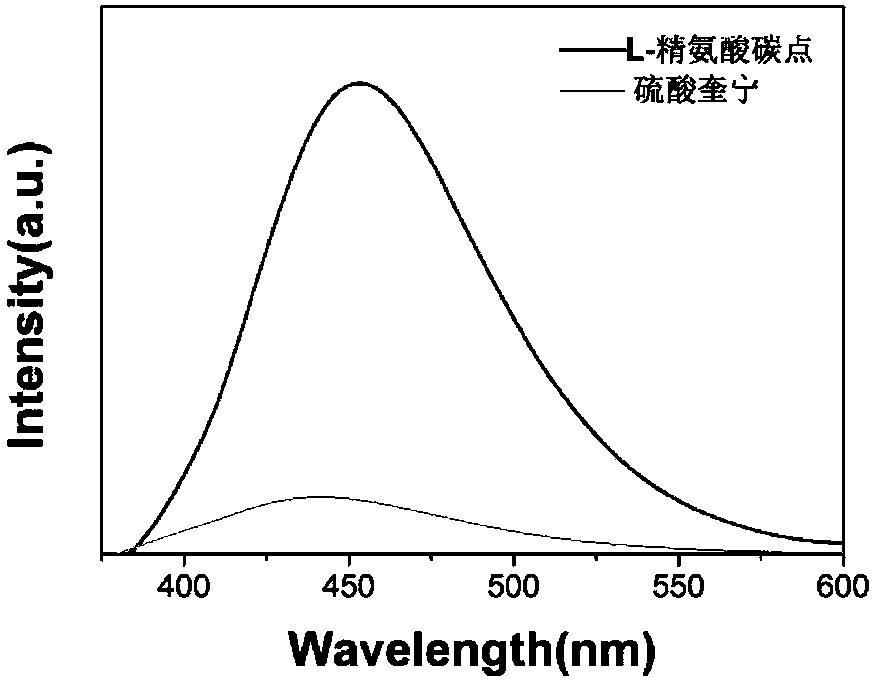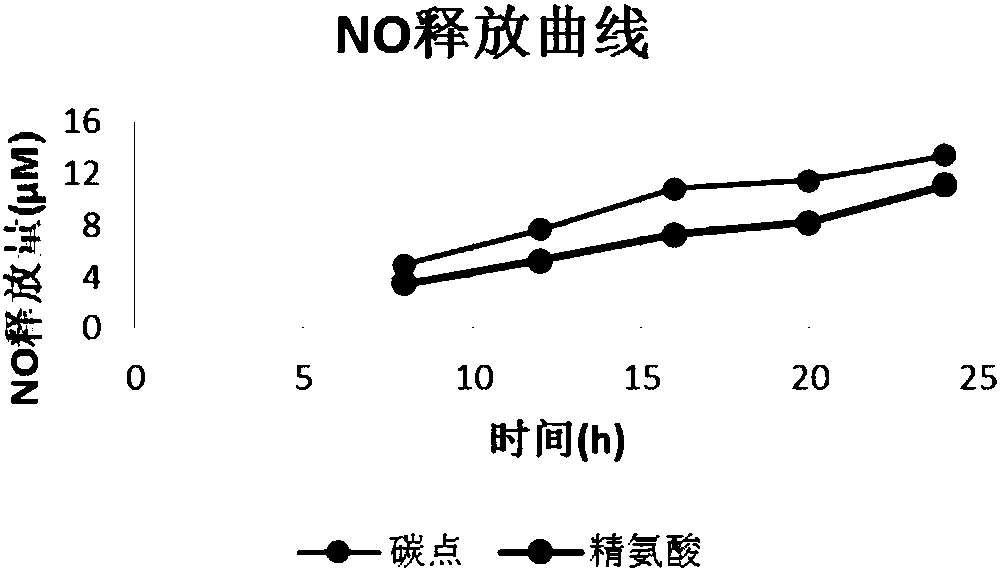Carbon dot used as antitumor drug and preparing method and application of carbon dot
An anti-tumor drug and carbon dot technology, which is applied in the field of fluorescent nanomaterials and biomedicine, can solve the problems of not very large release, limited practical application, and low efficiency, and achieves a long cycle time of action, easy promotion, and easy operation. Effect
- Summary
- Abstract
- Description
- Claims
- Application Information
AI Technical Summary
Problems solved by technology
Method used
Image
Examples
Embodiment 1
[0021] Weigh 11.5mmol L-arginine respectively, add 5.7mmol urea and 5.7mmol ethylenediamine respectively, dissolve in 15mL ultrapure water, after completely dissolving, heat in a microwave oven at 750W for 4 minutes and take it out to obtain L- Arginine urea carbon dots (URCD) and L-arginine ethylenediamine carbon dots (LACD).
[0022] URCD and LACD were each added into 90 mL of PBS buffer solution with pH=6.5 to dissolve. Then take 80 mL of the above-mentioned dissolved liquid and add 100 μL H 2 o 2 . The release of NO in the solution of the two systems after 15 hours of reaction was measured with Griess reagent. The results are shown in Table 5.
[0023] table 5
[0024]
[0025] Table 5 is LACD and URCD respectively with H 2 o 2 Respond to the statistical results of NO release for 15 hours. It can be seen from Table 5 that LACD releases more NO than URCD. After release for 15 hours, the amount of NO released by LACD was 6.5 μM, and the amount of NO releas...
Embodiment 2
[0027] Weigh 2g L-arginine and dissolve them in 15mL ultrapure water with 0.173g, 0.230g, 0.345g, 0.690g, 1.38g ethylenediamine respectively (the ratio of the amount of ethylenediamine to L-arginine 1:4, 1:3, 1:2, 1:1, 2:1), heated in a microwave oven at 750W for 4 minutes and then taken out to obtain L-arginine carbon dots (LACD) with different ratios.
[0028] Dissolve the above five kinds of LACD in 40mL PBS buffer solution with pH=6.5 respectively, then take 20mL each, and add 200μL H 2 o 2 React for 12 hours. Griess reagent was used to measure the release amount of NO after 12 hours of reaction, and the results are shown in Table 6.
[0029] Table 6
[0030] The amount ratio of ethylenediamine to L-arginine substance
[0031] It can be seen from Table 6 that when the ratio of ethylenediamine to L-arginine is 1:2, the amount of NO released is the largest, and the released amount is 28.44 μM.
Embodiment 3
[0032] Example 3 L-arginine carbon dots
[0033] Weigh 2g (11.5mmol) L-arginine, 0.345g (5.7mmol), dissolve it in 15mL ultrapure water, after completely dissolving, heat it in a microwave oven at 750W for 4 minutes and take it out to obtain L-arginine carbon point (LACD).
[0034] The prepared L-arginine carbon dots (LACD) were scanned by electron microscope, and the results were as follows: figure 1 shown, from figure 1 It can be seen that the average particle size of the prepared L-arginine carbon dots (LACD) is 3 nm, and the distribution is uniform, forming uniformly distributed spherical particles.
PUM
| Property | Measurement | Unit |
|---|---|---|
| size | aaaaa | aaaaa |
| particle diameter | aaaaa | aaaaa |
| particle size | aaaaa | aaaaa |
Abstract
Description
Claims
Application Information
 Login to View More
Login to View More - R&D
- Intellectual Property
- Life Sciences
- Materials
- Tech Scout
- Unparalleled Data Quality
- Higher Quality Content
- 60% Fewer Hallucinations
Browse by: Latest US Patents, China's latest patents, Technical Efficacy Thesaurus, Application Domain, Technology Topic, Popular Technical Reports.
© 2025 PatSnap. All rights reserved.Legal|Privacy policy|Modern Slavery Act Transparency Statement|Sitemap|About US| Contact US: help@patsnap.com



